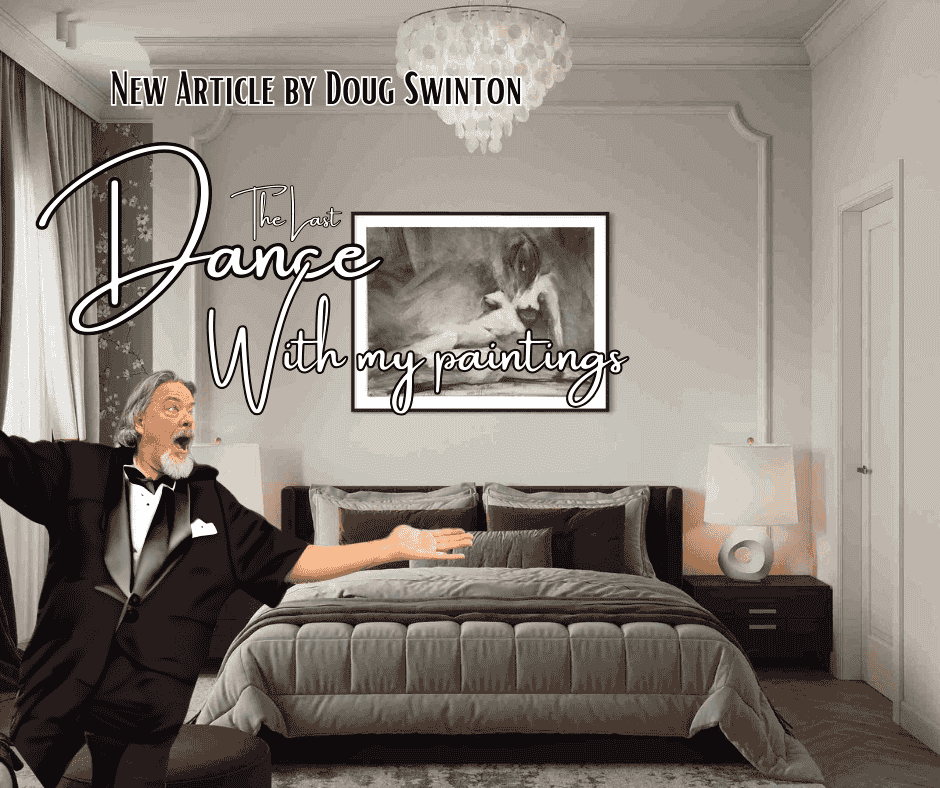10 Things About Painting Values
- Doug Swinton

- Nov 10, 2019
- 4 min read
Updated: Mar 15, 2021
Value does all the work; Colour gets all the credit.

Color is an inborn gift, but appreciation of value is merely training of the eye, which everyone ought to be able to acquire. John Singer Sargent
I recently went to a university art store to grab a new value chart because mine had so much paint on it that it was unreadable. Truth be told, I don't really need one anymore, but I’ve become so accustomed to using it (especially outdoors) that I'm afraid to go anywhere with out it.
I asked the girl at the counter where I could find one and she had no idea what I was talking about. I explained what a value finder was and she turned to ask the manager, to which he replied “we don't sell them."
Wow. A top level university with a painting program and their art store doesn’t sell the most fundamental tool in an artist’s kit. Head shake grumble grumble...
A bit of education is in order.
With my apologies to Dr. Gimbel, here is my eye primer….
In the back of the eye there is a beehive of activity. Workers from two camps keep it all going. The brotherhood of rod workers local 144 and the non-union employees of the cone camp. Rod workers do the work of black and white while cones workers work with colour. There are about 120 million rod workers and only 6 million cone workers. This lopsided distribution means that rod workers are getting the job done at a more optimal pace than the cone crew.
The rod workers take everything we perceive and paint each vision in values of grey. The cone workers then match that values to a colour. Value trumps colour. This design was put there so we could see in the dark and ward off predators (or sneak a peanut butter sandwich in the glow of the stove hood fan light).
This is why value in painting is a paramount to colour. Learn your values and you will get the golden ticket to colour. Although we recognize about 123,000,000 values, the Munsell colour system (which is what we primarily use for painting) has broken it down and simplified into 10 basic values.

1. Eyes wide open for colour but squint for values. Squinting helps you compare values. Black doesn't look as black until it’s against white. Nothing shows it’s true nature until it’s next to something comparable. Red is redder against green. When you squint, compare the value you are painting to the neighbouring values.
I keep a strip of black hockey tape on my easel to remind me that nothing in my painting should be that dark - especially not the shadows.
2. Every artist should read "Carlson’s Guide to Landscape Painting" (even if you're not a landscape painter). Chapter 3: Angles and Consequent Values is especially useful. It is the standard for teaching of values. The make up of each and every object or plane upon which an object sits in your painting is based upon this metric. You base your colours upon the these value planes.
In a nut shell, the chapter says: the more vertical an objet, the darker it will be. Therefore, generally speaking, your value for planes is as such:
Skies are value 8 or 9
Ground planes should be no more than 6 or 7
Hills or oblique planes should fall in a 5 or 4
Trees, light side is value 6 or 7
Objects in shadow , 4 or 5 and a 3 for dark accents.
Most ground plane shadows are no darker than a value 5If you step out of these value families, your painting will look murky, confused and muddy.
3. The lighter your values the less saturated the colour can be. Saturated colours read as a darker value.
4. Shadows outdoor are much lighter than in photos. If you want to bring a sense of light into your work try painting your shadows lighter.
5. Black and white studies. with no more than three values. Try some notan studies. Notan is the distribution of light and dark (not shading) for composition. https://drawpaintacademy.com/notan/
6. Identical values should not be placed in any two planes - only one! Otherwise your painting will flatten out and you will weaken the illusion of depth. You shouldn't have a ground plane value in your vertical upright tree plane value.
7. When you have two values that are the same next to one another but you need depth, try using chroma (strength of pigment) to differentiate. Bright colours read darker in value then they really are.
8. When objects (such as clouds) move away (deeper in the picture plane) the whites don't get darker! The shadows just get lighter and their values move closer together
9. Take a photo of your painting with your phone and desaturate it. If it holds up, the values are correct. If it doesn't, assess where it needs some fixin'.
10. When working outside, try painting things a little lighter and a touch warmer. Your painting will look better when you bring it inside.
11. Bonus. Buy yourself a Value Finder….you'll thank me later.
Your friend in art
Doug.








Discover the ancient secret to feminine health and pleasure with ben wa ball, a small, weighted sphere used for centuries to strengthen the pelvic floor. It promotes better muscle control, heightened sensations, and a more satisfying intimate experience with regular, mindful use during exercises or daily routines.
When you buy sex doll, consider size, material, and features that match your preferences. These lifelike companions are designed for comfort, pleasure, and emotional satisfaction. Buying from a trusted store ensures quality, durability, and privacy for a fulfilling and long-lasting experience of intimacy.
If you are searching for a reliable gaming platform, Raja Game can be a perfect choice due to its secure interface and fun challenges. It truly keeps players entertained with fresh features and regular updates.
Excellent article once again! Your writing keeps things simple yet meaningful. The Sikkim game has been trending recently, and I’m glad you cover such topics with accurate information. Players often look for trustworthy insights, and your blog provides exactly that. Keep sharing more about the growing gaming culture.
Ready for some fast-paced fun? Doodle Baseball is the ultimate time-killer! Tap to swing and time your hits to perfection in this charming, challenging Doodle Baseball game.